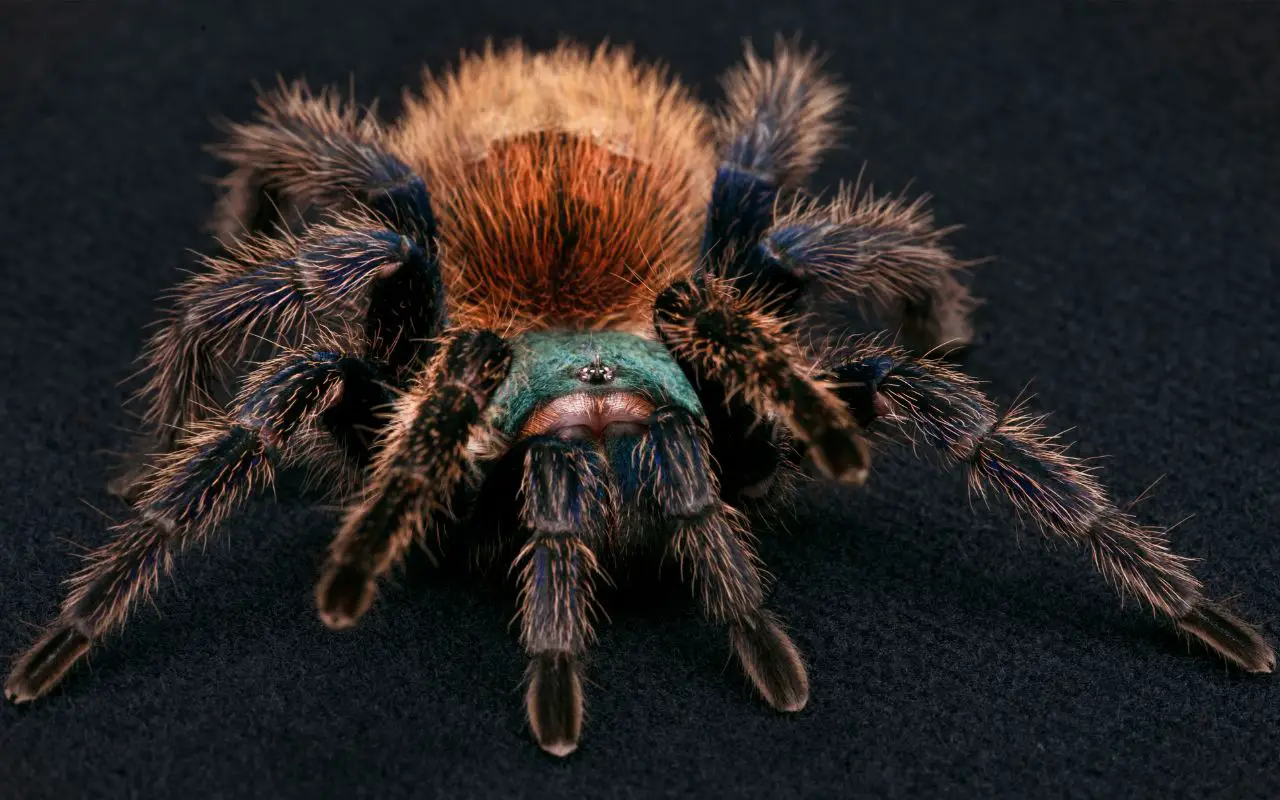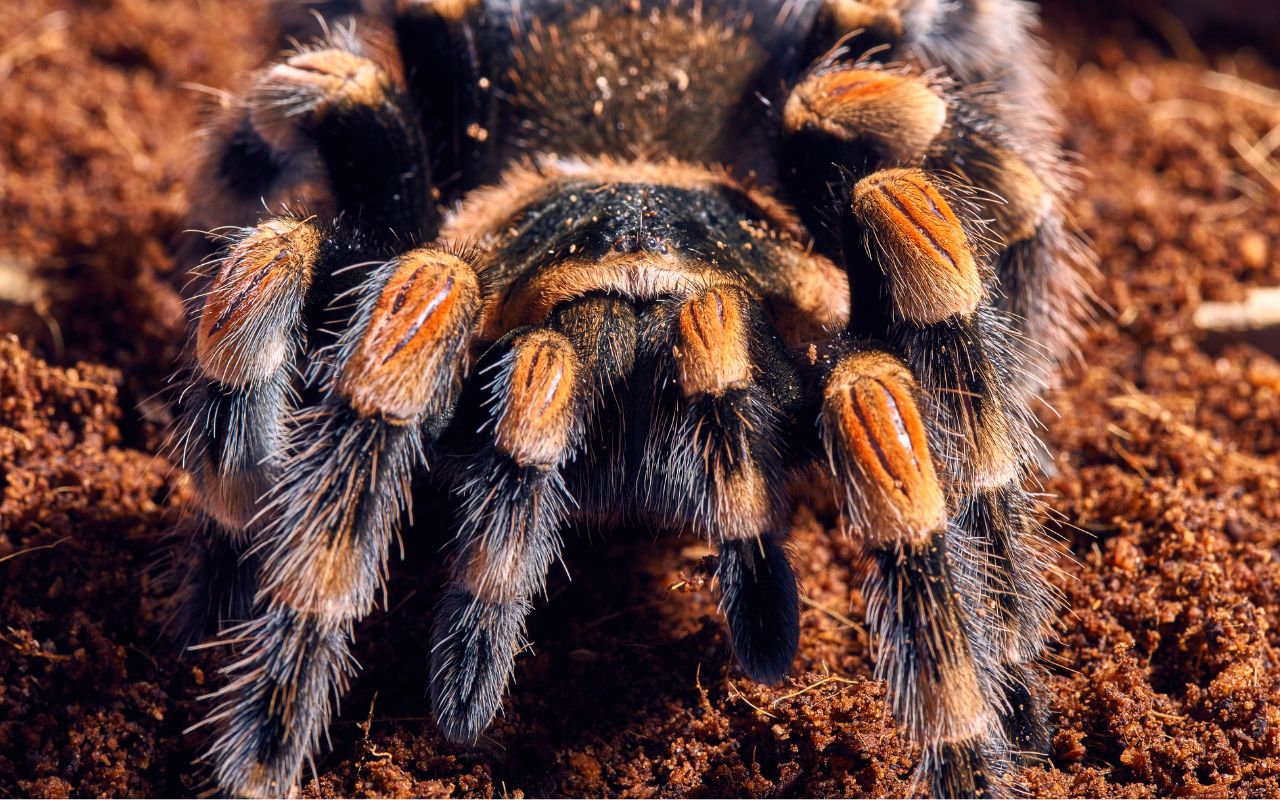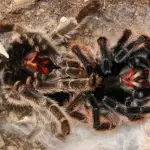Last updated on February 1st, 2023 at 10:08 am
The Mexican Red Knee Tarantula (Brachypelma hamorii) is the most famous pet tarantula of all. Though endangered in the wild, it makes a fantastic pet, and its care is pretty simple. Let’s find out how to look after them…
Are Mexican Red Knees hard to keep? If you’re not sure how to take care of your new pet, this guide will show you the basics of caring for your Mexican Red Knee. Learn about substrate, temperature, and enclosure. Read on to learn more about this fascinating species! A Mexican Red Knee is a fascinating addition to any home!
Are Mexican Red Knees hard to take care?
Taking care of a Mexican Red knee tarantula is a great hobby for both beginner and experienced arachnophiles. The species does not require lighting to keep it active and it feeds on live insects. Feeding your Mexican Red knee tarantula once or twice a week should be enough.
Feeding may stop temporarily during molting or when the animal is in a prey-recruiting stage. These tarantulas are easy to keep and they also will only eject hairs or flee when provoked.
The Mexican red knee tarantula is not aggressive or defensive. It only flings urticating hairs and bites when it feels threatened. It is not poisonous and it will not harm you unless you put it in a threatening environment.
But the venom of this species is equal to that of a bee and may cause allergic reactions. Therefore, it is important to keep the Mexican red knee tarantula away from children. This is the only possible drawback, as apart from this they are undisputably one of the best pet tarantulas.
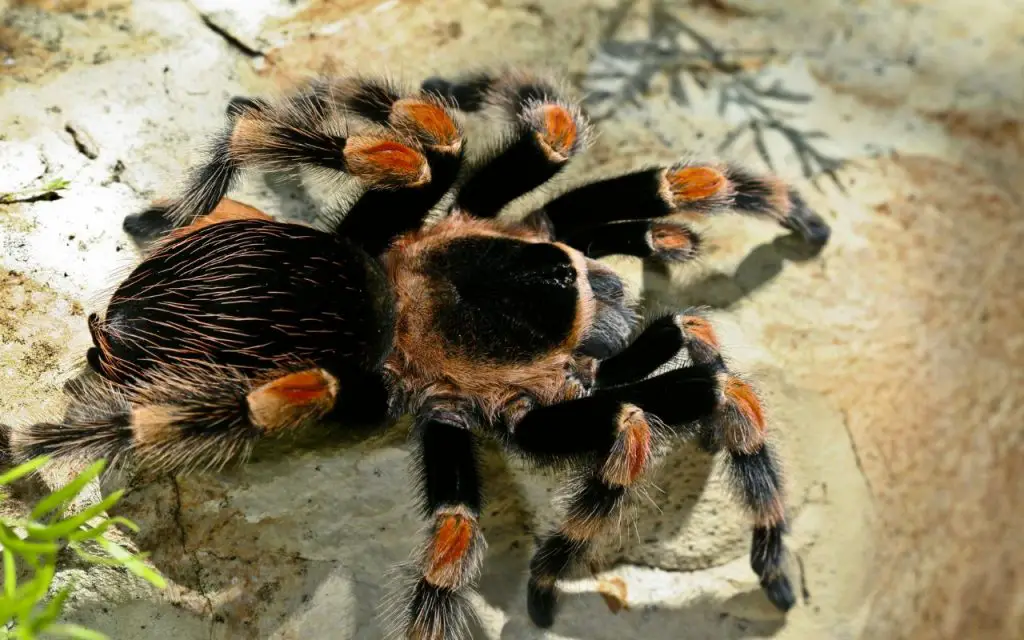
Mexican Red Knee Tarantula enclosure
Choosing the right substrate for your tarantula is an important step in ensuring a happy, healthy animal. Substrates should be moist, similar to the type that a wild tarantula would be comfortable living on.
It should not be sharp or toxic, and should also retain moisture and be biologically neutral. Using cork bark on top will help your tarantula feel safe from predators.
The Mexican Red Knee Tarantula requires at least 4 inches of substrate in its enclosure. Its substrate should be made from coconut fiber, organic soil, or sphagnum moss. Make sure that your Mexican Red Knee Tarantula has adequate humidity and that it is not exposed to direct sunlight. Avoid placing it in a sunny window, as the sun and heat can make it stressed (or even kill it).
Mexican Red Knee Tarantula temperature
The typical temperature for a Mexican red knee tarantula is about 68-78°F. Often, this is room temperature, meaning no additional heat is required for them. It is important to provide a temperature range in the enclosure for this species, and to never let them overheat, or get cooler than 65°F.
If your house is very cool, you can use a small heat mat stuck to the side of the enclosure to maintain a consistent temperature. A temperature gun is a helpful tool for monitoring the temperature in your Mexican red knee tarantula’s enclosure. Never use a heat pad without a thermostat and a thermometer of some kind. More often than not, its safer to not use a heat source if you can avoid it.
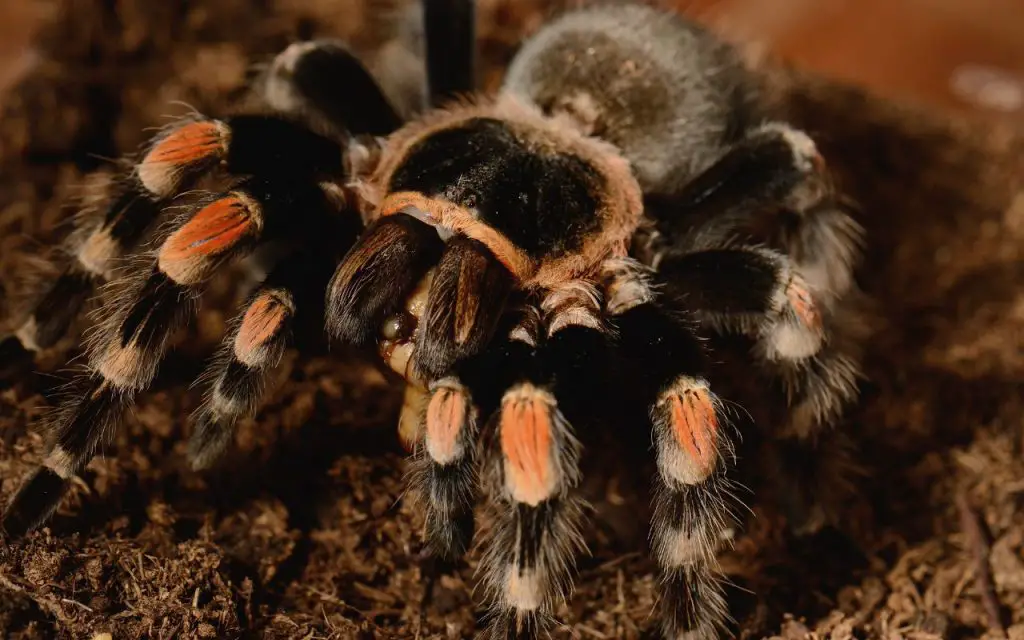
Mexican Red Knee substrate
When considering a Mexican Red Knee Tarantula care package, keep in mind that this species has a low cost of entry and minimal setup requirements. In addition, this species prefers a moderate humidity level of forty to sixty percent, but it can occasionally reach eighty percent.
Coco coire substrate is best, as it can accommodate the burrowing behavior of this species. A small amount of decor, such as cork bark laid horizontally over the substrate or a half-shelled ceramic pot, can be used as a hiding place.
To ensure a safe environment for your new pet, avoid using harsh cleaners and keep your room as dark as possible. Avoid using bleach or anything like that to clean your spider’s enclosure.
Sand and cedar should never be used for this species, as they are both harmful.
Acceptable substrates include:
- coco coir (Eco earth)
- peat and vermiculite
- sterile topsoil and vermiculite
- sphagnum moss (mixed with other substrates listed above)
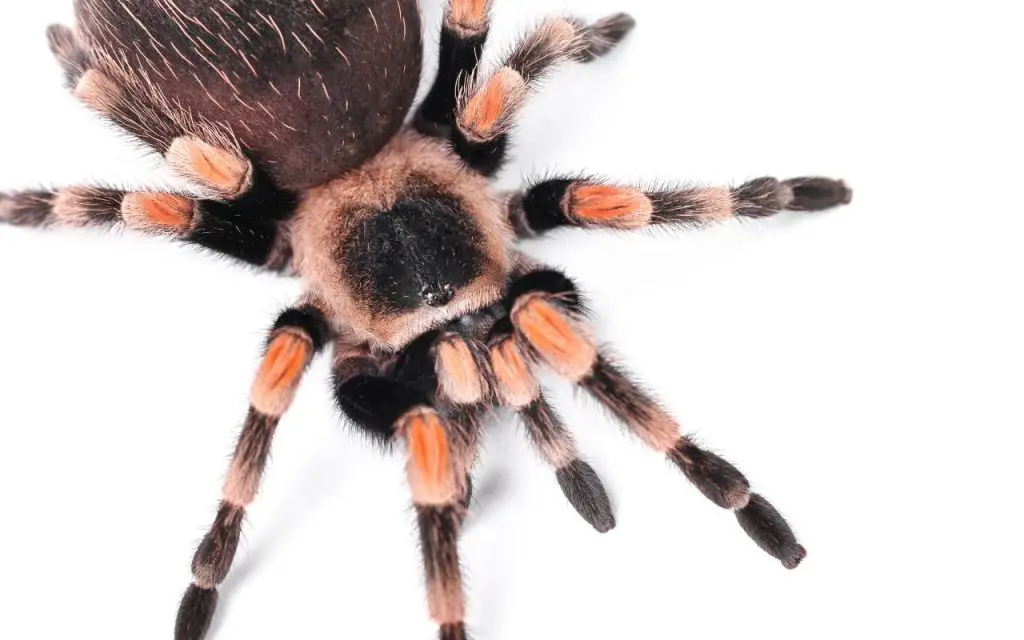
Diet
The Mexican red knee tarantula is a ground-dwelling species that can live in an aquarium with at least four inches of substrate. It should be kept away from direct sunlight and other sources of heat to avoid stress. In these conditions the Mexican red knee tarantula will build its own burrow and display natural hunting behaviour by ambushing insects.
The diet of the Mexican red knee tarantula should consist of insects that are high in protein, such as crickets. It is best to give it just a few live prey at a time. The amount of food a tarantula should eat per feeding is based on the body weight of the tarantula.
On average, a Tarantula should be fed 3 to 6 prey items a week. If you are thinking about getting one of these tarantulas as a pet, you must understand that they molt once a year. During this time, your tarantula will appear lame and not interested in food. Once the molt is complete, remove the exoskeleton from the tank and wait at least five days before feeding your tarantula.
Acceptable food items include:
- crickets
- hornworms
- dubia roaches
- pinkie mice (for large females)
- locusts
- mealworms
- zophobas worms (Superworms)
Water and Humidity
This species likes a humidity range of 40 to 60%. This is roughly equivalent to room temperature in most regions. Nonetheless, central heating can greatly reduce humidity in winter. Always keep a humidity gauge in your spider’s enclosure. If its humidity drops too low, increase it by spraying the substrate with filtered water.
In addition, always provide drinking water in the form of a shallow dish. Place pebbles or sponge in the water so that there’s no way your pet can drown.
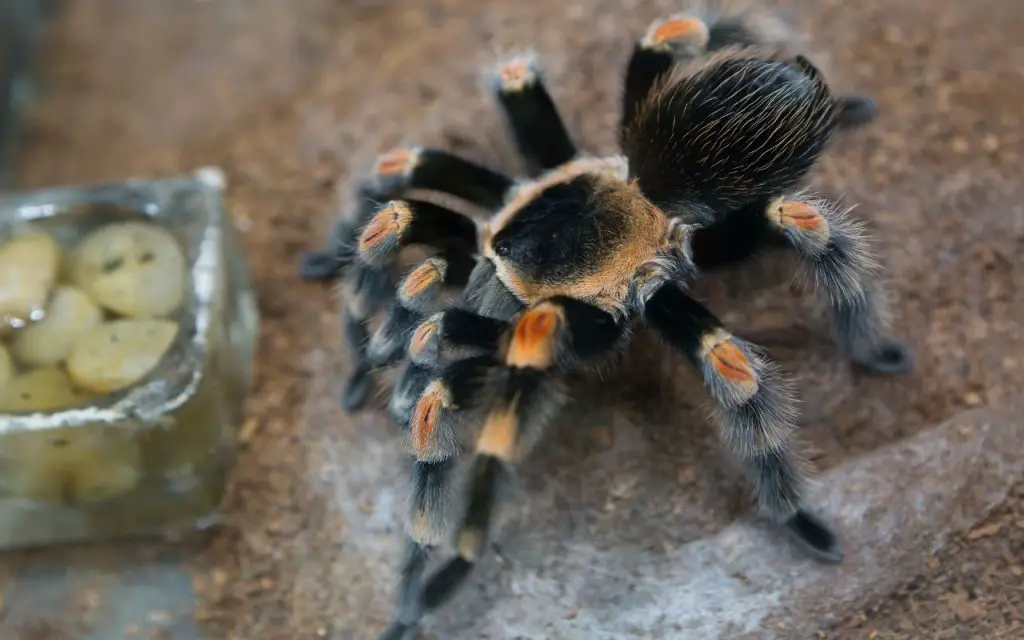
Mexican Red Knee Tarantula handling
A Mexican Red Knee tarantula is not the type of spider that requires much care or exercise. Its calm demeanor makes it easy to handle. Like any species, you do occasionally get irritable ones. In my experience this is a rare exception, however. Overall, it’s probably as calm as the Chilean Rose, and possibly as calm as the Brazilian Black.
As with most new world tarantulas, their hairs are urticating. This means they cause skin and eye irritation if the spider kicks them at you. This isn’t particularly dangerous, but can be extremely uncomfortable. If your tarantula is a “kicker” it is probably best to avoid handling.
Mexican Red Knee Tarantula bite
The Mexican red knee tarantula is primarily dark brown with orange bands on its knees. It lives in dry areas and digs deep burrows in soil banks. The legs and abdomen are covered with urticating hairs. While red knees usually prefer not to bite humans, they are more likely to attack dogs and cats.
The Mexican Red Knee tarantula’s appearance is colorful, but it is not a dangerous spider. It is usually a docile spider that only bites if it is threatened. It may flick off urticating hairs, which can produce a nasty rash if the spider bites you.
It’s important to follow the correct precautions to avoid bites in the firts place. If a tarantula is kicking at you, or raising its front legs, it’s saying it wants to be left alone.
Price
If you’re interested in owning a tarantula, the Mexican Red Knee Tarantula is one of the most popular choices. This species, a member of the Brachypelma genus, is characterized by the bright red to orange coloration of its joints. Despite its small size, it makes for a great pet, and is inexpensive to purchase. It is usually sold at a price between $50 and $100, but prices can vary significantly.
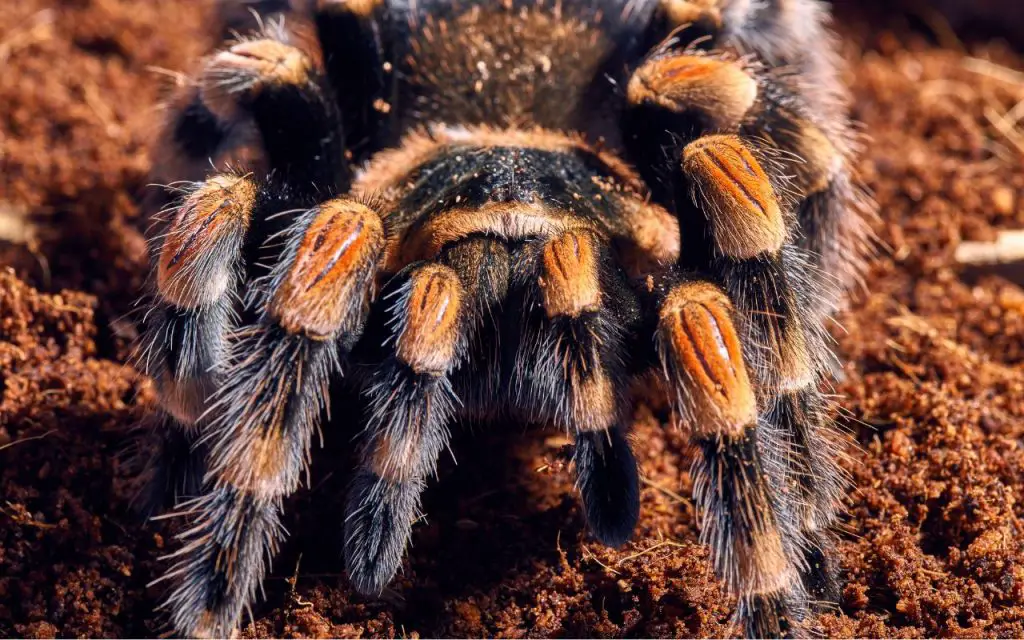
Mexican Red Knee Tarantula FAQs:
Do red knee tarantulas like to climb?
The red knee tarantula likes to climb, but its awful at it. If you want to see a tarantula climbing, you should understand the reason why they do so. They secrete silk to hold themselves on surfaces while they crawl and tend to cling onto this silk when climbing. If you allow them to climb something outside of their enclosure, they could fall and hurt themselves.
Can Mexican red-knee tarantula jump?
Despite its name, the Mexican red-knee tarantula is not aggressive around humans. It does sometimes jumb without warning though. This is a problem because its eggshell-like exoskeleton makes it a delicate creature. Even a short fall onto a hard floor could kill it. For this reason, it is best to handle it on a carpeted floor.
How often do Mexican Red Knees molt?
If you are wondering, “How often do Mexican Red Knee Tarantulans molt?” you are not alone. In fact, most tarantulas undergo multiple molts per year.
The Mexican red knee tarantula is a beautiful species that grows slowly and molts throughout its lifespan. Its exoskeleton is made from a tough rust-colored substance called keratin. It does not grow with the spider; therefore, it sheds its exoskeleton every year. These molts are necessary to keep the spider healthy and safe.

